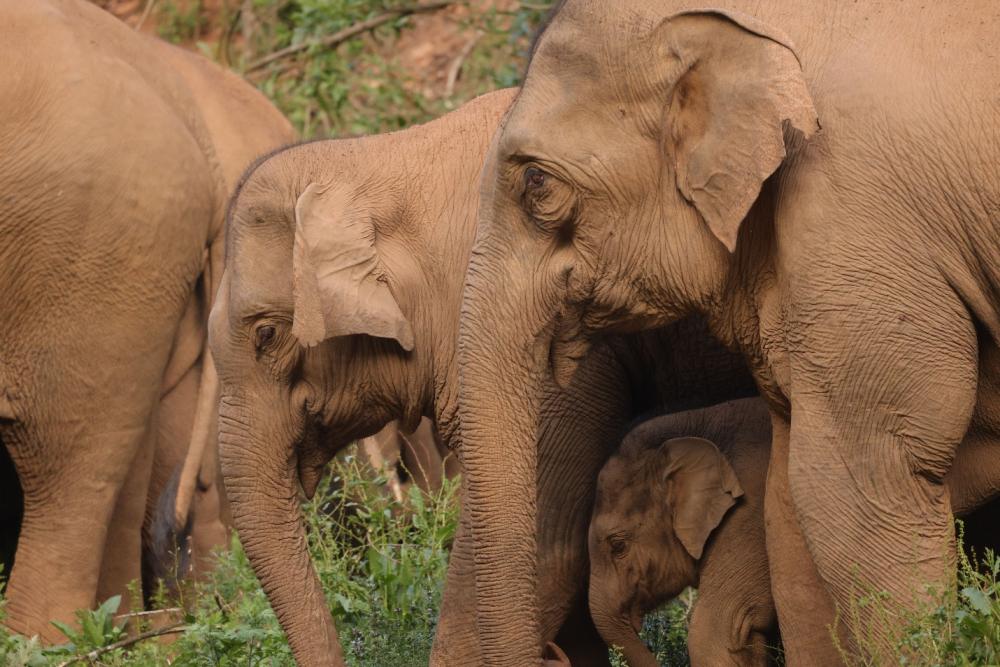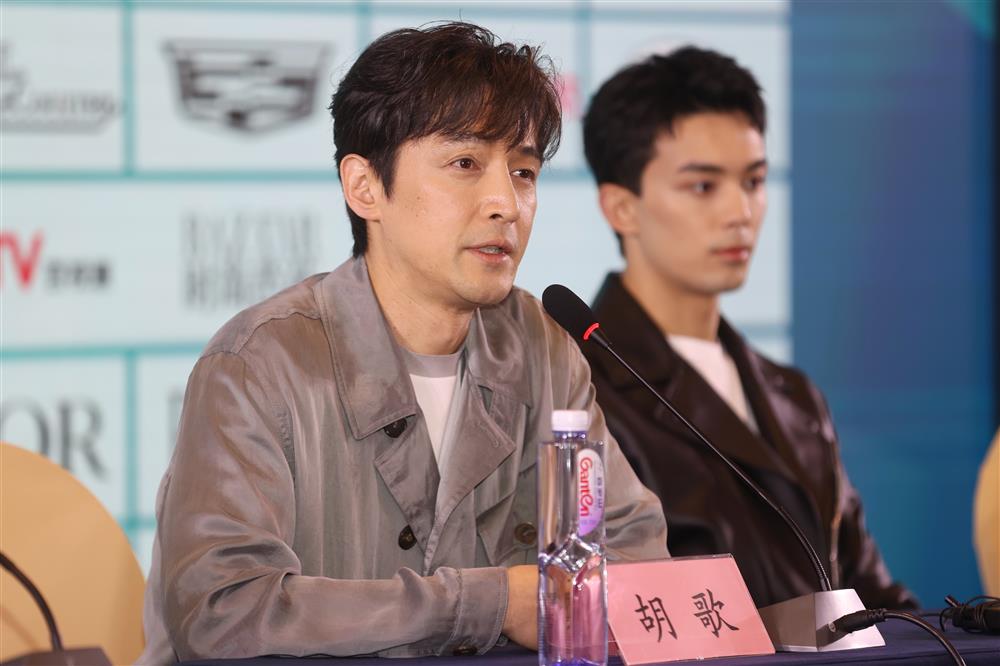Dialogue with Zheng Xinmiao, former director of the Palace Museum: Understanding the Four fold Historical Culture of the Palace Museum | The Forbidden City | History
The Forbidden City, which has gone through more than 600 years of ups and downs, is the most important material carrier of traditional Chinese cultural spirit and a Chinese symbol that attracts worldwide attention.
The understanding of the Forbidden City is not only an understanding of Chinese history, but also an understanding of Chinese national culture.
The Forbidden City is indescribable and cannot be fully written. In his book "The Forbidden City: A History of China Since the 15th Century," Zheng Xinmiao, former director of the Palace Museum, placed the Forbidden City within the framework of grand history and culture from a holistic historical perspective, organically linking architecture, cultural relics, and palace history and culture, and writing a comprehensive history that reflects the complete connotation of the Forbidden City.
"The Forbidden City: A History of China Since the Fifteenth Century" by Zheng Xinmiao, Lijiang Publishing House, Forbidden City Publishing House
The Forbidden City is not just a treasure trove
Shangshu Fang: There have been countless books about the Forbidden City, discussing cultural relics, architecture, or palace history, interpreting this historical and cultural treasure trove from various perspectives. Your new book is about writing about the Forbidden City from a holistic historical perspective. How to understand the meaning of "whole"?
Zheng Xinmiao: The Forbidden City was a palace during the Ming and Qing dynasties, a name that was once awe inspiring and full of mystery. Strictly speaking, this name only came into existence about a hundred years after the establishment of the Ming Dynasty, before which it was known as the "Imperial City". The ancient imperial palace was a forbidden area, and there is a myth that the Purple Wall was the residence of the Heavenly Emperor. The emperor claimed to be the son of heaven, so in contrast to the Purple Wall, the palace of the Heavenly Emperor was called the Forbidden City. The Forbidden City is now called the Forbidden City, which means the palace of the past. This is the name people used to call this former nine tiered palace after the end of the two thousand year imperial system of the Xinhai Revolution.
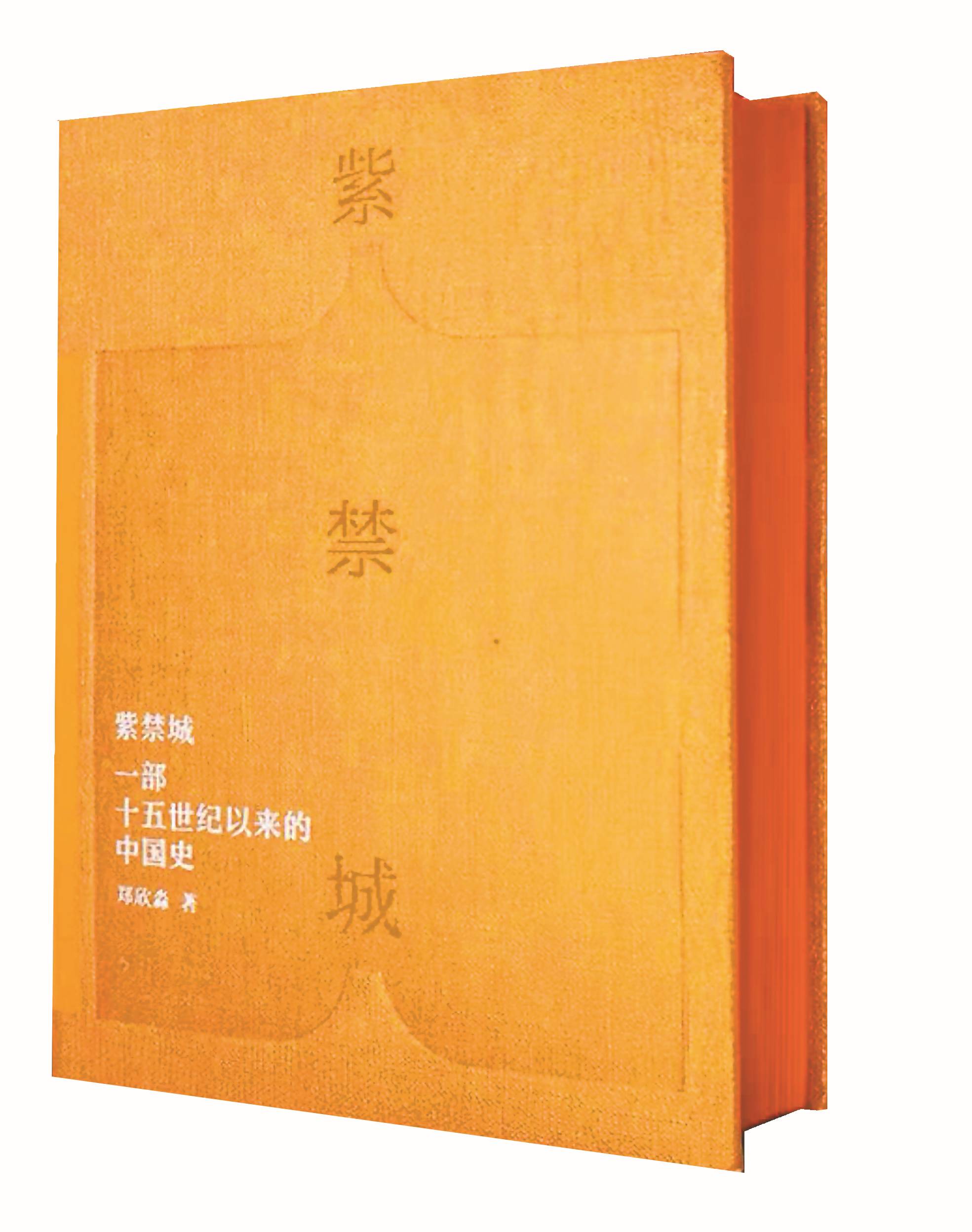
The Forbidden City, as a huge and rare treasure, contains many ancient buildings, movable cultural relics, and intangible cultural heritage. However, the ancient architecture of the Forbidden City is not a simple "shell", and the Forbidden City is not just a "treasure trove". Every cultural relic and building in the Forbidden City is not an isolated and unrelated existence, containing vivid characters and events, which together constitute a colorful scene and scroll of palace history and culture. That is to say, the culture of the Forbidden City has a holistic nature.
In 2003, during my tenure as the director of the Palace Museum, I proposed the concept of "Palace Museum Studies". Its core lies in the fact that the Palace Museum is a vast and profound cultural entity, and its architecture, cultural relics, and court history and culture are an organic unity. Studying the collection of cultural relics, ancient architecture, and palace historical sites as a interconnected whole can broaden people's thinking on the study of individual cultural relics, prevent isolated views on cultural relics, and prevent fragmented research on cultural relics. This is also the essence of "Palace Museum Studies".
Shangshu Fang: Why is it said that the Forbidden City is a cultural whole?
Zheng Xinmiao: This can be understood from two aspects: space and time.
From a spatial perspective, the countless households and various cultural relics of the Forbidden City, as well as the people and events behind the palace and cultural relics collection, various secret secrets, and the cultural life of the palace, are a vivid unity. It is obvious that without the historical connotations attached to the past of the palace, the significance and value of those old collections in the palace will inevitably be affected. To protect the complete Forbidden City, it is not only necessary to protect the Forbidden City within 720000 square meters, but also to protect some Ming and Qing royal buildings closely related to it, as well as its protection zone and buffer zone.
In terms of time, the Forbidden City has gone through more than 600 years of vicissitudes, not only witnessing the history of 491 years as the national center of the Ming and Qing dynasties, but also recording the glorious history of the Palace Museum, which has been established for nearly a century. At the same time, it also embodies the rich connotations of China's over 3000 years of palace history and over 2000 years of imperial history.
The reason why we need to understand the overall history of the Forbidden City is to understand the integrity, or rather the integrity, of the great heritage value of the Forbidden City.
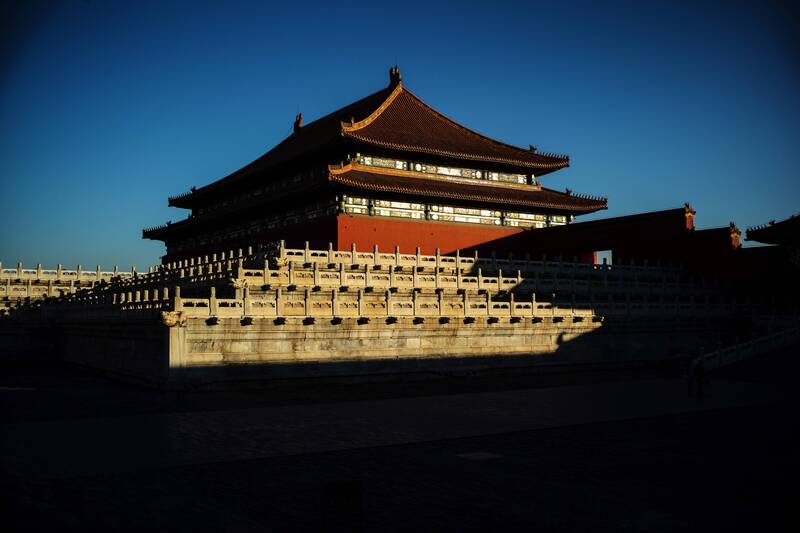
Silhouette of the Hall of Supreme Harmony
Study Room: I heard that you have spent more than two years writing this book. As one of the advocates and authoritative experts of "Palace Museum Studies", what are the difficulties in writing and researching this book for you?
Zheng Xinmiao: I have written many professional articles about "Palace Museum Studies". In this new book, I have tried the prose style, hoping to express the views of "Palace Museum Studies" in a more popular way, so that more readers can understand "Palace Museum Studies" and view it from a holistic perspective.
The biggest difficulty in writing this book is to clarify the research approach from the myriad of ideas, and to summarize the overall history of the Forbidden City for over 600 years as concisely and clearly as possible. After comprehensive investigation and repeated deliberation, I finally interpret the Forbidden City from four aspects: the construction history of the Forbidden City as a palace, the political history of the Forbidden City as a court, the life history of the Forbidden City as a court, and the museum history of the Forbidden City as the Forbidden City. Each aspect is divided into several parts, each with several sections, including people, stories, and cultural relics. I combine people, things, and things together, striving to present a vivid, three-dimensional, and constantly evolving Forbidden City.
The process of writing this book is a learning and tutoring experience for me. During the research process, I consulted a large amount of materials, such as the interpretation of the Ming Dynasty imperial clothing and exquisite daily utensils in the material culture of the Ming court. I cited the results of the excavation report of the "Dingling" by the Institute of Archaeology of the Chinese Academy of Social Sciences. Readers can also read some relatively new research results about the Forbidden City in the book, such as the research on the production website of the Qing Palace Museum Office. Among them, three Qianlong style enamel paintings were made in France, which was based on the research results of an article in the 2020 Journal of the Palace Museum.
In this book, you can also see some exclusive pictures, such as the Qin'an Hall of Taoism in the Forbidden City, which is well-known to everyone. However, the Xuanqiong Baodian, an important Taoist activity venue in the Qing Dynasty palace, is less well-known. We specially invited a photographer to take photos of the interior of the Xuanqiong Baodian, which can be said to be a rare sight.
Interior of Xuanqiong Treasure Hall

We cannot just see the Qing Palace and ignore the Ming Palace
Shangshu Fang: The Forbidden City was built in 1420. As the culmination of palace architecture throughout Chinese history, what is the historical background behind its construction? How to view the Forbidden City in the context of the historical changes in Eurasia in the 15th century?
Zheng Xinmiao: The construction and functional operation of the Forbidden City were closely related to China's position in world history, especially in Eurasian history at that time. When the Ming Dynasty was established, it was in the late Middle Ages of Europe. China had a population of over 100 million, a huge production capacity in agriculture, and a wide and complex domestic trade network. The Ming Dynasty government established a tribute system centered around the Concordia and the Ten Kingdoms to appease neighboring countries.
The relative openness and strength of the Ming Empire in the 15th century, as well as the pioneering spirit of Ming Chengzu Zhu Di, were the backgrounds and conditions that cannot be ignored in the construction of the Forbidden City. Beijing played an important role in the geopolitical landscape of Europe and Asia at that time. In order to achieve the political ideals of "monarch Huayi" and "unification of the world", Emperor Chengzu of the Ming Dynasty made up his mind to move the capital from Nanjing to Beijing as early as his accession to the throne. In the first year of Yongle, he declared to the world that Beiping would be Beijing, and that the Beijing branch would be established to oversee local affairs, strengthening Beijing's political center position. This is the first time in history that the name Beijing has appeared.
The construction of the Forbidden City began in the fourth year of Yongle and took 14 years to complete. In 1421, the Ming Dynasty officially moved its capital to Beijing. This is the endpoint of the eastward and northward migration of Chinese capitals throughout history, which directly influenced the history of the Ming Dynasty and had a profound impact on the political development of China thereafter.
Shangshu Fang: You said in your book, "The overall history of the Forbidden City cannot be limited to the Qing Dynasty without the Ming Dynasty." However, modern people seem to have a far less understanding of the Ming Dynasty's Forbidden City than the Qing Dynasty. What are the differences between the Ming Dynasty's Forbidden City and the familiar Forbidden City?
Zheng Xinmiao: Due to the proximity of the Qing Dynasty to our present day and the relatively large number of relics left behind by the Qing Palace, many people seem to believe that the Forbidden City is mainly the Qing Palace Museum. In fact, the Forbidden City is called the "the Imperial Palaces of the Ming and Qing Dynasties" in the world cultural heritage, and there are many relics left by the Ming Palace. The connection between the Ming and Qing dynasties should not be ignored or cut off.

The Ming Dynasty Forbidden City is the culmination of palace architecture throughout Chinese history, and is the most representative example of Confucian ritual requirements such as "Left Ancestor and Right Society, Former and Later Dynasties and Market" and "Five Gates and Three Dynasties". Its design reflects traditional Chinese philosophical ideas, such as the unity of heaven and man; Ethical ideas, such as the supremacy of imperial power; Aesthetic ideas, such as grandeur and balance and symmetry. At the same time, this huge palace also established the central axis of Beijing centered around the Forbidden City. The later Qing Dynasty almost directly adopted the Ming Dynasty's Forbidden City. The buildings that people see today, such as the Meridian Gate, Shenwu Gate, Zhonghe Hall, Baohe Hall, Qin'an Hall, and Nanxun Hall, are still mostly original buildings from the early Ming Dynasty or rebuilt during the Ming Dynasty.
The three main halls of the Forbidden City, which are well-known to everyone, were initially called the Fengtian Hall, Huagai Hall, and Jingshen Hall in the Ming Dynasty. As the main building of the Forbidden City, the architectural form of the Three Great Halls retains many ancient styles. There are three doors to the south of the first three halls, and the main door is the Fengtian Gate, which is nine bays wide and has double eaves resting on the mountaintop. This is the place where the Ming Dynasty emperor ruled through the imperial gate.
After Emperor Shunzhi ascended the throne in the Forbidden City, he changed the names of the three major halls to Taihe Hall, Zhonghe Hall, and Baohe Hall. In addition to the three major halls, the Forbidden City also has many palaces, halls, gates, and halls with the word "he", mainly including the Yuanhe Hall, Tihe Hall, Yonghe Palace, Tishun Hall, Gu Hexuan, Xiehe Gate, Xihe Gate, and so on. Most of these buildings were renamed during the Qing Dynasty. In ancient times, "harmony" was regarded as an ideal realm. The Three Great Halls are symbols of the sacred imperial power, emphasizing "harmony" and representing the new governing philosophy and guiding ideology of the Forbidden City at that time, hoping to achieve the most ideal state of governance based on "harmony".
In addition, the southernmost Chengtian Gate of the Forbidden City in the Ming Dynasty was renamed "Tiananmen" in the Qing Dynasty to show the differences between the Qing Dynasty and the previous dynasty. In order to correspond with the Tiananmen Square, in the ninth year of the Shunzhi reign, the original Ming Dynasty's Beianmen Square was repaired and renamed as the Di'anmen Square.
Emperor Chenghua of Ming Dynasty's "Illustrated Illustrations of the Year and Dynasty" in the Palace Museum Collection
Shangshu Fang: In addition to architecture, what other important cultural relics of the Ming Dynasty palace are still housed in the current Palace Museum?
Zheng Xinmiao: The Palace Museum currently has a collection of 7488 Ming Dynasty paintings, 3005 Ming Dynasty calligraphy, and 10422 Ming Dynasty letters. However, these numbers are not yet exact, as some collections that have not been dated may also be from the Ming Dynasty.
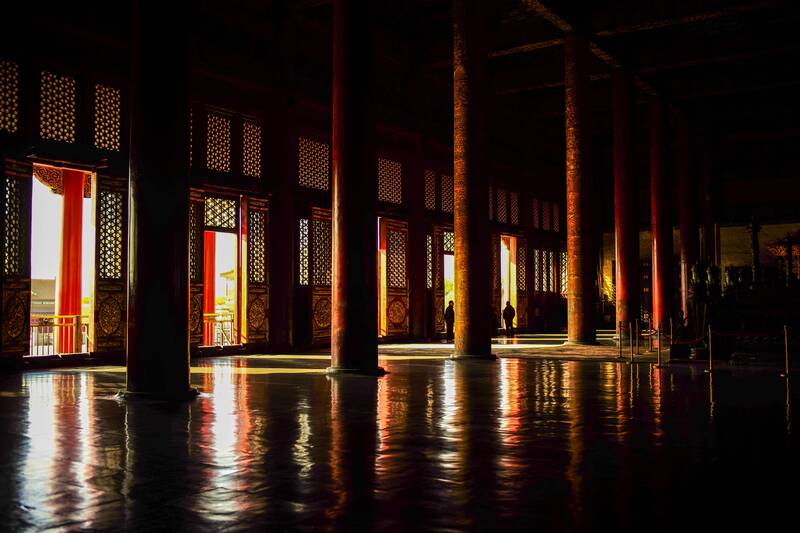
Many people have some understanding of the calligraphy and paintings collected or created by Qing emperors such as Yongzheng and Qianlong. In fact, the imperial calligraphy and paintings left by Ming Taizu Zhu Yuanzhang, Ming Renzong Zhu Gaochi, Ming Xuanzong Zhu Zhanji, Ming Xianzong Zhu Jianshen, Ming Sizong Zhu Youjian, and others also reflect their cultural cultivation and artistic attainments. In some of their works, obvious political purposes can even be seen. For example, Emperor Xuande's paintings of Marquis Wu lying high, Pine Tree in Lianpu, Longevity Star, Three Yang Blooming Tai, and Melon and Rat, as well as Emperor Chenghua's paintings of Five Virtues Generals and Young Children, and Unity and Harmony, all have special significance. From individual inscriptions and postscripts, we can also see the relationship between monarchs and officials at that time. For example, the title of "The Longevity Star Painting" reads "The Imperial Pen Play Writes the Longevity Star Painting, Gives the Shaobao Crown Prince Shaofu and the Minister of Revenue Xia Yuanji", and the title of "The Wuhou High Lying Painting" reads "The Xuande Wushen Imperial Pen Play Writes, Gives the Pingjiang Uncle Chen Xuan".
As a space for political activities and daily life of Ming Dynasty emperors and empresses, in addition to architectural relics, the Palace Museum also collects a considerable amount of physical relics. For example, a batch of cultural relics reflecting the imperial system of the Ming Dynasty, the most important of which is the jade posthumous book used for the worship of the Imperial Temple. Except for Emperor Chongzhen, almost all Ming emperors from Taizu to Xizong were a complete set. In addition, the Palace Museum also houses a large number of cultural relics reflecting various aspects of Ming Dynasty palace life, including clothing, food, housing, and transportation.
Interior of Taihe Hall
Connected to the fate of the Chinese nation
Study Room: The Forbidden City in the 20th century is also an important part of the overall history of the Forbidden City. How did you understand the Forbidden City from the perspective of the changing history of 20th century China?
Zheng Xinmiao: Looking at the Forbidden City from the perspective of the history of changes in 20th century China, that is, looking at the Forbidden City from the perspective of the fate of Chinese people in the 20th century. In the first half of the 20th century, China underwent drastic changes, and the changes and development of the Forbidden City are a microcosm of this turbulent history.
The most significant change of the Forbidden City in the early 20th century was its transformation from a palace to a museum in 1925. Its function shifted from politics to culture, more precisely, public culture. From then on, the Palace Museum was endowed with a new connotation of inheriting Chinese national culture and maintaining the bloodline of Chinese civilization.

The Palace Museum has received and managed all the items left by the last emperor Puyi in the "inner court". These items not only include artworks, traditional antique treasures, but also reflect the court's regulations, daily cultural life, clothing, food, housing, and transportation, as well as books, classics, Ming and Qing archives, etc. The counting work of Qing Palace items began in December 1924 and was not basically completed until 1930.
After the establishment of the Palace Museum, people's understanding of the value of the Palace Museum has gone through several major debates. What was the focus of the debate at that time?
Zheng Xinmiao: The first debate was in 1928 around Jing Hengyi's proposal to abolish the Palace Museum and auction or relocate all items of the Palace Museum separately. The establishment of the Palace Museum fundamentally changed the identity and nature of the old collections in the Qing Dynasty. These old collections became cultural assets shared by the people. However, the Forbidden City was once the imperial palace, and there is always a shadow in the minds of some revolutionaries who oppose feudalism and overthrow the monarchy: is it right to value the Palace Museum so much? Is the protection of the Forbidden City consistent with the purpose of anti feudalism?
Jing Hengyi was a democratic revolutionary and educator, but his understanding of the Palace Museum and the old collections of the Qing Dynasty was one-sided at that time. He regarded the Palace Museum as a "reverse production" of the former Qing Dynasty, and if it was a reverse production, it had to be auctioned off. At the same time, his understanding of the nature and role of museums was also biased.
At that time, in order to preserve the Palace Museum, the people of the Palace Museum distributed leaflets to the society, stating the process and necessity of building the museum in front of the Chinese people. The most powerful criticism of Jing Hengyi is a petition drafted by Li Zongdong, which provides a profound exposition of the value of the Forbidden City, especially its global value: "During the Ming and Qing dynasties, with the rise of maritime navigation, the spread of Westernization, and the unchanged east wind, it formed a 5000 year old history and opened up a new chapter for the future. Therefore, its culture truly has global value, and what it represents is not only written but also crystallized in the Forbidden City and its collections. Recently, European and American visitors to Beiping have exclaimed that it can be included in the world's museums. Even if we do not cherish cultural relics ourselves, we should cherish them for the world." Looking overseas, how should we strive to protect historical objects like that person? Should we further destroy them
The second debate began around the southward migration of cultural relics from the Forbidden City. After the news of the relocation of cultural relics from the Forbidden City to the south in 1933 came to light in the newspapers, there was a great uproar of public opinion, forming two voices of opposition and support. The main reason for opposition was the belief that the government should first protect the land and the people in the face of a great enemy. However, the government now attaches so much importance to the ancient relics of the Forbidden City because they are antiques and valuable, which is why they need to be relocated.
However, more knowledgeable individuals and social groups believe that the cultural relics of the Forbidden City are not ordinary antiques or antiques, but national treasures and are the historical and cultural heritage of the nation, and their value cannot be measured by currency. In the face of enemy invasion, if these cultural relics remain in place, there is a risk of damage.
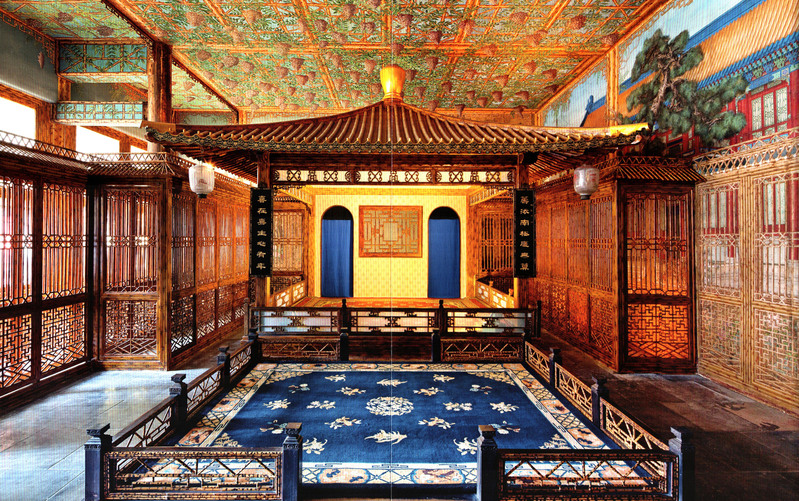
In 1938, during the southward migration of cultural relics to the north, a truck carrying cultural relics on a bamboo raft crossed the river
Shangshu Fang: The southward migration of cultural relics from the Forbidden City is a tumultuous period for the Palace Museum and a microcosm of Chinese culture in turbulent times.
Zheng Xinmiao: Indeed. Starting from February 1933, approximately 13000 boxes of cultural relics and masterpieces of the Palace Museum were relocated to Shanghai and Nanjing to prevent Japanese looting. After November 1937, they were evacuated to the southwest rear and returned to Nanjing to the east by June 1947. With a delay of 10 years, the land stretches for thousands of miles, twists and turns, and we are prepared to taste the hardships. This important treasure of Chinese civilization has finally been fully preserved.
The cultural relics of the Forbidden City were initially moved south to Shanghai and stored for 4 years. Later, they were moved westward in three routes and traveled multiple times before finally being stored in three different places: the cultural relics of the South Road were stored in the Huayan Cave in Anshun for 6 years, the cultural relics of the Central Road were stored in Angu for 7 years, and the cultural relics of the North Road were stored in Emei for 7 years. This batch of cultural relics has suffered numerous catastrophic disasters and has repeatedly turned them into safety. Without the support of the government, especially the people, it is impossible to protect these cultural relics well. The common people believe that "antiques have spirit" and believe that the cultural relics of the Forbidden City are "the blessing of the country". This shows that they connect the cultural relics of the Forbidden City with the fate of the Chinese nation, with national independence and dignity, and pour deep national emotions into it.
During the War of Resistance Against Japan, the southward migration of cultural relics from the Forbidden City had the significance of protecting the cultural lifeline of the nation; The cultural relics of the Forbidden City, which have undergone the baptism of the Anti Japanese War, share the hardships of our nation and are endowed with special value.
The Tongjing Painting and Stage in the Qinqin Studio
More than 1600 keys, as precious as a family
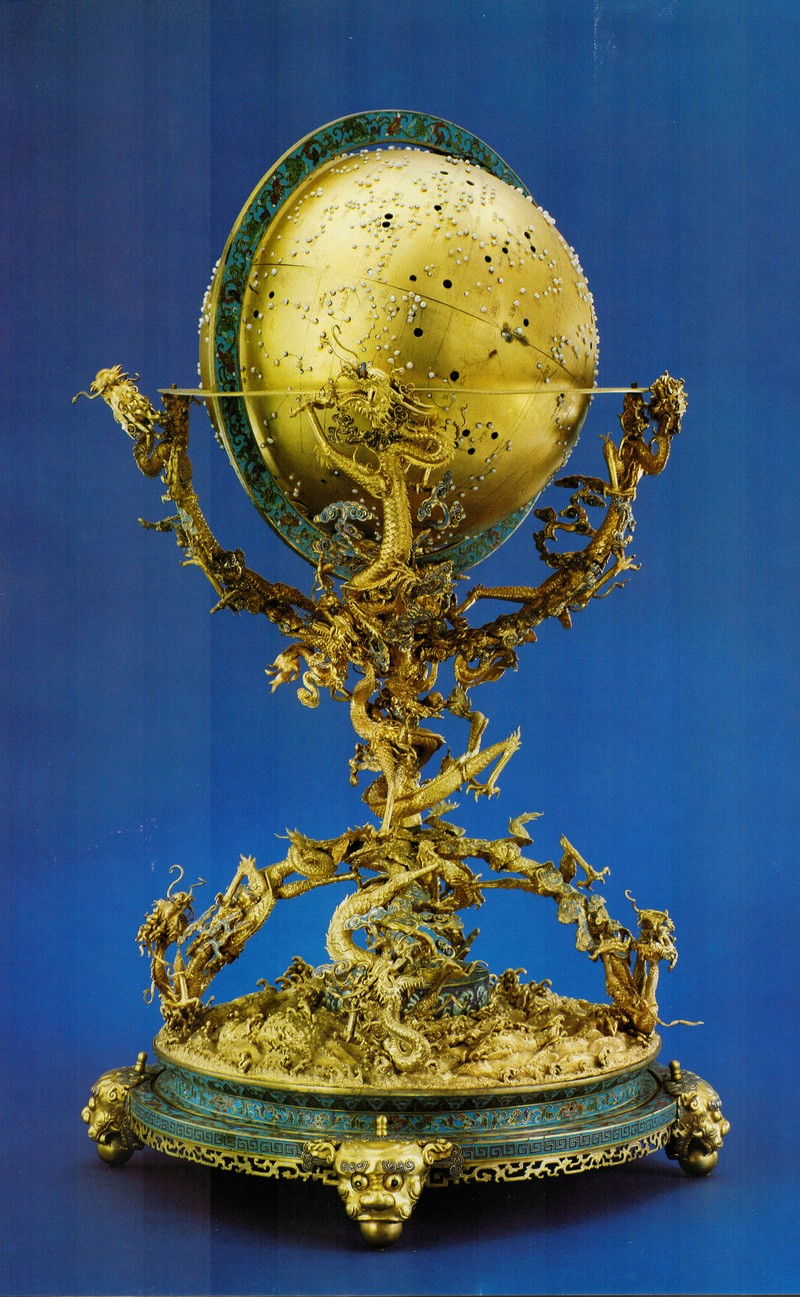
Going to the Study: A few years ago, a documentary called "I'm Repairing Cultural Relics in the Forbidden City" allowed many viewers to learn about a group of unknown craftsmen from a great country. Besides the cultural relic restorers, what other ordinary and indispensable figures from the Forbidden City that you are familiar with are mentioned in your book?
Zheng Xinmiao: In each palace in the open area of the Palace Museum, there are dedicated caregivers, known as "station halls". They stand in each hall, shouldering the responsibility of guarding. They are cold in winter and hot in summer, day after day, year after year, monotonous and very hardworking, really amazing.
Managing keys is also a major event for the Palace Museum. The Forbidden City has many doors and keys, totaling over 1600, each with two spare keys. The locks of the Forbidden City come in various types, from the Ming Dynasty to the Qing Dynasty. The largest copper gold-plated lock measures one foot in length and two pounds in weight, paired with a one foot long gold-plated key. There are several keys like this, wrapped in red cloth and tied in bundles.
The key room of the Forbidden City is located in a small house east of the Shenwu Gate, with a one meter high and two meter long counter inside, where registration books and key lists are placed. There are hundreds of small drawers in the four large safes, each with the name of the key pasted on its surface, densely packed, resembling the herbal medicine cabinet in a Chinese pharmacy. The staff can be said to be very familiar with these over 1600 keys. As long as the colleague says where the key is needed, as soon as the words are finished, the key will be accurately placed in front of him. People come and go every day to collect and return keys, and there are also on duty personnel at night. They work silently for decades without any mistakes, which is the spirit of the people of the Forbidden City.
Shangshu Fang: As the former head of the Palace Museum, what are your unique feelings and understanding of the "Palace Museum Spirit"?
Zheng Xinmiao: I started working at the Palace Museum in 2002, and in 2005, it was the 80th anniversary of its establishment. In our review and summary at that time, we realized that the 80 year history has formed a distinctive concept, character, and temperament for the Palace Museum, which can be summarized as the "Palace Spirit". This spirit plays an important role in the development of the Palace Museum's cause.
Later, through multiple serious discussions, the Palace Museum formed a consensus with "valuing national treasures as life" as its spiritual core. The spirit of the Forbidden City is the spirit of the Palace Museum and the people of the Forbidden City. It is the accumulation and crystallization of several generations of Forbidden City people in the process of creating achievements.

The Golden Tianglobe Instrument of the Qing Dynasty in the Palace Museum Collection
Study Room: Many well-known museums around the world have evolved from palaces. What is the most unique feature of the Palace Museum compared to these museums?
Zheng Xinmiao: The Louvre and Palace of Versailles in France, the Kremlin and Hermitage Museum in Russia, and the Palace Museum in Madrid, Spain have all evolved from the palace. Some of them are museums established in the former imperial palace, and their collections are gradually being collected and enriched, such as the Louvre and the Hermitage Museum; Some museums, such as the Palace of Versailles and the Kremlin, are mainly established based on the original palace collections.
The cultural relics of the Forbidden City are the continuation and only remaining fruit of the collection of the imperial family throughout Chinese history. With its magnificent ancient artifacts, books and classics, archival documents, and the magnificent Forbidden City palace, it has become the most important achievement and representative of Chinese civilization. The Palace Museum has over 1.8 million cultural relics in its collection, with a rich variety of categories and a complete system. There are a total of 25 categories, which can be further divided into 243 subcategories, reflecting the rich and colorful cultural relics of the palace. The rich and diverse collection of cultural relics is a significant difference between the Palace Museum and other world palace museums.
More importantly, the Forbidden City is a condensed 5000 year history of Chinese civilization, which is not available in any foreign museum. Among the four ancient civilizations in the world, compared to ancient Egypt, ancient India, and ancient Babylon, the origin of Chinese civilization cannot be considered the earliest. However, Chinese civilization is the only uninterrupted civilization that has evolved, developed, and continued according to its own logic. The people living on this land today are the descendants of those ancestors who created ancient civilizations. And other ancient civilizations dried up thousands of years ago, and the history of these countries' museums and Western museums that collect their cultural relics is interrupted rather than continued.
